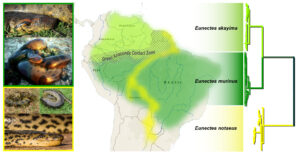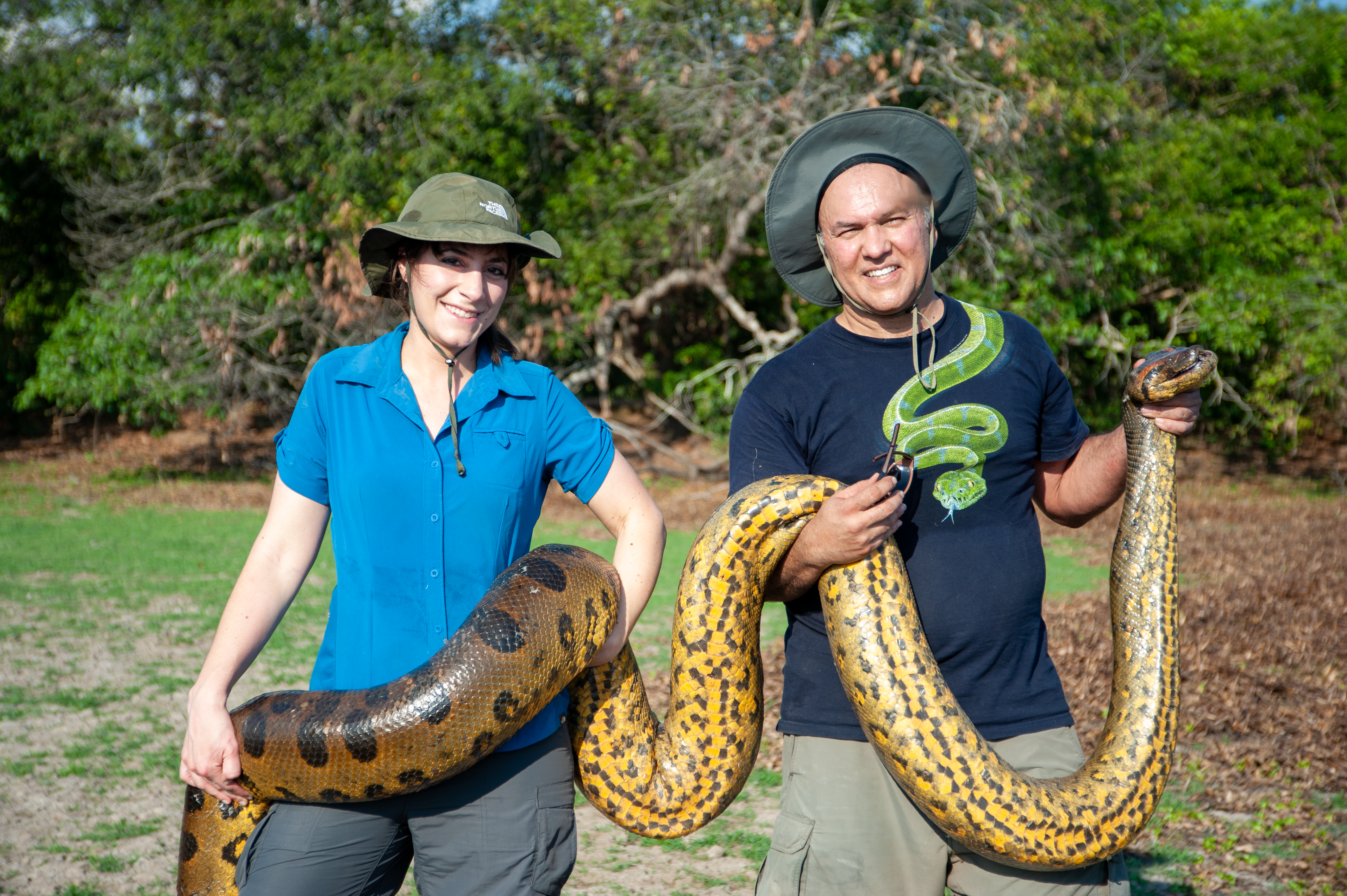Northern Green Anaconda Found on Study Led By Dr. Jesus Rivas and Dr. Sarah Corey-Rivas
Read the complete study here (PDF)
Las Vegas, NM– Researchers from New Mexico Highlands University (NMHU) have identified a new species of Giant Anaconda, the Northern Green Anaconda (Eunectes akayima), in South America. The range of the Northern Green Anaconda extends from the Ecuadorian Amazon all the way to French Guiana passing through Colombia and Venezuela. The discovery is detailed in their recent publication, titled “Disentangling the Anacondas: Revealing a New Green Species and Rethinking Yellows”, published in the journal, MDPI Diversity, on February 16, 2024.
NMHU Biology Professor Dr. Jesus Rivas, was the lead on the study and oversaw a team of South American, Australian, and European researchers and scientists over the past 18 years. He is the intellectual leader of the study and his authority in the field of anacondas makes this work exceptional in the discipline.
Fellow NMHU Biology professor Dr. Sarah Corey-Rivas is a senior co-author of the publication and guided the genetic design of the study. Corey-Rivas designed new molecular markers, led the bench work in generating gene sequences, and conducted the phylogenetic analysis producing evolutionary trees used to identify the anaconda species.
 Samples of all Eunectes species from across their entire distribution, encompassing 9 countries, were collected in the field. “What we found is that the difference between these species is substantial, their genetic divergence is much larger than that between humans and chimps,” Rivas said. Genetic work was carried out at various institutions, including New Mexico Highlands University, Universidad de Indomarica, Instituto Federal do Mato Grosso, Naturalis Biodiversity Center, and Universidad Indoamerica.
Samples of all Eunectes species from across their entire distribution, encompassing 9 countries, were collected in the field. “What we found is that the difference between these species is substantial, their genetic divergence is much larger than that between humans and chimps,” Rivas said. Genetic work was carried out at various institutions, including New Mexico Highlands University, Universidad de Indomarica, Instituto Federal do Mato Grosso, Naturalis Biodiversity Center, and Universidad Indoamerica.
Dr. Rivas has spent 32 years studying the Anaconda. “The Northern Green Anaconda, also known as Eunectes akayima, represents a remarkable addition to the biodiversity of South America,” he said. “Its range stretches from northern parts of the continent, including Venezuela, Columbia, Suriname, French Guyana, and likely the northern part of Brazil.” Dr. Rivas also had the honor of naming the species. “The name is taken from the Carib Indians of Venezuela and it roughly translates to ‘The Great Snake,’” he said.
“The importance of this discovery goes beyond the identification of a new species,” Dr. Rivas said. “The addition of the Northern Green Anaconda challenges and expands our understanding of anaconda taxonomy and evolution. The study sheds light on the intricate relationships between different anaconda species, such as the Green Anaconda and the Yellow Anaconda, and redefines our perception of their evolutionary history.”
“Our discovery of this previously unknown species of green anaconda evolving secretly for millions of years is so important for the conservation community,” Dr. Corey-Rivas said. “Each anaconda species needs careful evaluation for conservation value and threats to its future existence. For countries and indigenous sovereign territories with the newly designated species, it is a renewed call to action to care for the land and its biodiversity in order to sustain this amazing top predator. This is kind of a wake-up call to get busy studying more of the diversity of South America.”
This publication marks a milestone in anaconda research and will serve as a cornerstone for future investigations into the biodiversity and evolution of South America’s iconic Giant Anacondas.

